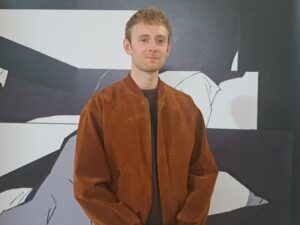
By Aela Niget-Powers, Student at ESSEC Business School
The House of Medici, Francis I, John D. Rockefeller, and Peggy Guggenheim are among the most recognized to weave patronage into the fabric of Western culture seamlessly. In France, the practice of patronage or “mécénat,” to refer precisely to its own art world, became firmly embedded this century within the majority of corporate giants such as L’Oréal and EDF. The French Ministry of Culture characterizes this mécénat as the provision of material support to an individual or team engaged in activities of general interest, devoid of direct compensation from the beneficiary. Over the decades, it has become an indispensable resource across all cultural sectors, pivotal in enriching collections and modernizing exhibition spaces. Patronage now generally ranges between 7 and 8% of the operational revenue of national museums. In 2012, the Palais de Tokyo ascended to prominence as one of Europe’s largest contemporary art centers, a metamorphosis made possible through the comprehensive rehabilitation of its exhibition space. In order to maintain its prestige, continuously transform its space, and ultimately provide a safe haven, the institution secures compatible patrons.
I had the distinct privilege of interviewing Tom Rowell, who was entrusted with the role of supporting economic development at the Palais de Tokyo. Hailing from the British Isles, Rowell’s passion for the arts burgeoned in his early years during an internship as an assistant curator at the Museum of Contemporary Arts in Denver. Realizing a profound connection with France since the culmination of his high school education, he then joined Linklaters, a global law firm specializing in corporate law and an active player in French cultural patronage. In order to better facilitate support of the arts, Mr. Rowell, at the same time, indulged his passion for higher knowledge and obtained a master’s degree in art history from Sorbonne University, specializing in contemporary art. At the Palais de Tokyo, Mr. Rowell assumes an active and multifaceted role in the realm of patronage. From the meticulous prospecting phase, which involves the creation of an exhaustive list enumerating potential patrons, he adeptly manages appointments to usher proposals from inception to negotiation with finesse. Inspired ceaselessly by artists, he contributes significantly to the sustained vibrancy of the cultural institutions under his purview.
“ The demands of the field of patronage necessitate a capacity to don multiple hats, deftly juggling economic considerations and the priorities of corporate patrons with an unwavering commitment to the artistic project and, above all, the independence of the institution’s programming,” responded Mr. Rowell to describe his role, underscoring the imperative of acquiring the requisite skill set to join the intricate dance of patronage.
I) The Significance of Museums in Society
Cultural patronage, in its essence, entails a powerful mission: the sustainable development of museums. To elucidate this point, Mr. Rowell referred to the universal scope inherent in museums. Their purpose transcends boundaries, aiming to encompass every individual and provide a platform for self-representation within a narrative, within heritage. According to him, museums constitute spaces not proffering information but inspiring discussion; they function as arenas for exchange, proposal, and reflection, capable of changing minds and fostering awareness.
Mr. Rowell further delineated that by actively engaging with a broad and diverse audience, the Palais de Tokyo endeavors to carve out a space wherein contemporary art, often shrouded in elitism, assumes a more inclusive accessibility. A tangible manifestation of this commitment is Le Hamo, a new and permanent space within the Palais de Tokyo that offers educational and therapeutic activities designed around the needs of specific groups, with a particular focus on mental health and neurodiversity. Its mission is to provide a nurturing environment for creation, interaction, and imagination, enabling individuals to feel less alienated or ostracized and dare to express their artistic talents. Consequently, museums emerge as agents in promoting well-being, opportunity, and inclusion, especially with regard to marginalized groups. They function as catalysts, propelling the emergence of new artists and fostering audacious creations.
The Palais de Tokyo’s commitment to combating marginalization also extends to its artistic ecosystem. Mr. Rowell illustrated this with an example of the exhibition II morso delle termite, which features artists who have perennially existed on the fringes and received little attention from the mainstream art world throughout their careers. In this context, museums play a pivotal role in appreciating and amplifying artistic diversity, championing previously marginalized expressions.
II) The Evolution of Cultural Patronage
Since the inception of the “Aillagon” law on August 1, 2003, cultural patronage has witnessed substantial growth, buoyed by the significant tax incentives that it offers companies. Notably, the law allows a tax deduction of 60% of the donated sum, capped at 0.005% of the company’s annual turnover. Corporate benefits are limited in value to 25% of the donation amount. Additional perks the museum offers, such as private tours, contributions to corporate image enhancement, or even inclusion on the Wall of Thanks at the Palais de Tokyo, further sweeten the deals. Corporate patronage is assuming an increasingly focal role within the realm of patronage.
The financial model of the Palais de Tokyo depends on a symbiotic relationship between public (state grants constituting 40%) and private funding. This strategy annually generates over half of the institution’s operating budget. Compared to most museums, most of the funding for the Palais de Tokyo is derived from internal resources. Patronage, therefore, assumes a critical function in financing this cultural bastion on various fronts, providing support to artists and creators through financial contributions, in-kind donations, or the sharing of specialized skills. Illustrating this symbiosis, Tom Rowell points to the “Reclaiming the Earth” exhibition,
“Kate Newby collaborated with Les Rairies-Montrieux brickworks to produce a site-specific installation in the disused plant beds on Palais de Tokyo’s public square, which the artist filled with specially crafted bricks created during a production residency in the company’s workshop. This collaboration underscores the commitment of private enterprises to lend their expertise as a valuable contribution to producing artworks.”
For Mr. Rowell, a standout achievement in cultural patronage is implementing Palais de Tokyo’s Sustainable Palais (Palais Durable) initiative, which is emblematic of responsible patronage promoting sustainable culture with a holistic approach. Each patron involved in this program brings unique expertise to the fore: the UTOPIES agency aids in crafting the Palais’s Corporate Social Responsibility roadmap; Emerige’s endowment fund enhances the building’s sustainability; Eco-Adapt optimizes energy consumption; and Guerlain installs beehives in the gardens, with all converging toward a shared commitment to sustainability in cultural endeavors. To tangibly assess the impact of cultural endeavors, The Palais de Tokyo, in collaboration with the patron Ruinart, has played a key role in developing a tool to gauge the influence of exhibitions precisely. At the same time, a crucial inquiry surfaces regarding the influence of cultural patronage on artists, a factor that holds the potential to sway the trajectory of museum programming. However, as stressed by Tom Rowell, patrons wield no influence over artistic creativity.
“The artist must retain complete autonomy, as the objective is for artists to express their own perspectives and voices.”
This brings to mind a painting by Miriam Cahn that stirred controversy due to its provocative nature, “Fuck abstraction!!” Although the museum had anticipated the potential “misunderstanding” stemming from the “artistic representation of violence,” it could not prevent an act of vandalism that defaced this work, prompting immediate denouncement by Emmanuel Macron: “I condemn the act of vandalism committed yesterday at the Palais de Tokyo. Targeting a work of art is an attack on our values.”
The question of values assumes paramount significance in the patronage realm. While the Palais de Tokyo has never been accused of artistic suppression on behalf of sponsors, the quandary arises concerning the selection of contributors.
Tom Rowell highlights the necessary vigilance regarding “greenwashing” and “culture washing,” insisting on the importance of aligning values and conducting a thorough background check, particularly against a backdrop of increased scrutiny of the cultural patronage sector by the media, activist groups, and artists and creatives themselves.
In contemplating prospective avenues that may sculpt the future of cultural funding, Tom Rowell accentuates the role of patronage, particularly in the context of environmental concerns. He concluded that the Palais de Tokyo follows the philosophy of Institutional Permaculture* as the overall framework for its sustainable transition. It considers the need to reduce our environmental impact and amplify our positive impact or “brainprint” through our programming.
We express our gratitude to Mr. Rowell for his thought-provoking interview.
*For more information on Institutional Permaculture, see https://palaisdetokyo.com/en/ressource/petit- traite-de-permaculture-institutionnelle/

Aela Niget-Powers
Aela is a student at ESSEC Business School, holding dual French and American citizenship. Committed to her passion for the arts, she attends night classes at l'école du Louvre to further her knowledge and appreciation of artistic expression. Aela has explored diverse cultures worldwide, fostering a global perspective. Her editorial endeavors are driven by a desire to elevate conversations, infusing them with a nuanced exploration of the dynamic interplay between art and society.